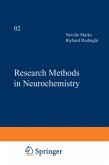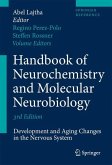On picking up this first volume of a new series of books the reader may ask the two questions: (a) why research methods? and (b) why in neurochem istry? The answers to these questions are easy - they more than justify the volumes to come and show the strong need for their existence. It is customary to think of methods as a necessary but unexciting means to an end - to relegate advances in methodology to a minor role in the creative, original portion of advances in science. This is not the case; the pace-setting function of methodology is well illustrated in most areas of neurobiology. To formulate our questions to Nature (which is the essence of experimental design), methodology is needed; to get answers to our ques tions we have to devise yet new methods. The chapters of the present volume fully illustrate how the development of a new method can cut a new path how it can open new fields, just as the microscope founded histology. Heter ogeneity of structures presents a formidablechallenge for methodology in the nervous system, yet methods for separating the structures are essential if we ever want to decipher the enigma of functional contribution of the ele ments to the whole. The problem is not only physical separation-clearly methods are essential to study complex structures in situ.
Bitte wählen Sie Ihr Anliegen aus.
Rechnungen
Retourenschein anfordern
Bestellstatus
Storno








